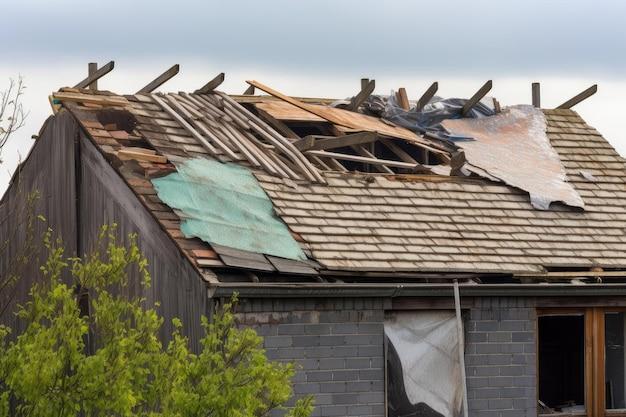Roof replacement is a significant home maintenance task that is essential for maintaining the integrity and protection of your house. Living in California, a state known for its diverse climate and varying weather conditions, makes it crucial to understand when and how often you should replace your roof. In this article, we will delve into the factors that affect the lifespan of a roof in California and provide insights on how often you should consider replacing your roof to ensure the safety and comfort of your home.

Factors Affecting Roof Lifespan in California:
Several factors influence the lifespan of a roof in California. One of the primary factors is the type of roofing material used. Different roofing materials have varying levels of durability and resistance to California’s weather conditions. For instance, asphalt shingles, which are widely used in residential buildings, typically have a lifespan of around 20 to 30 years. On the other hand, metal roofs can last significantly longer, up to 50 years or more, due to their superior strength and resistance to elements like rain, wind, and UV rays.
Another crucial factor that affects the longevity of your roof in California is the local climate. The state experiences a range of climates, from the arid deserts in Southern California to the more temperate and rainy regions in the north. Coastal areas are also prone to saltwater exposure, which can accelerate the wear and tear of roofing materials. With such diverse weather patterns, it’s essential to choose roofing materials that can withstand the specific climatic challenges of your area.
Routine Maintenance and Repairs:
Proper maintenance and timely repairs play a significant role in extending the lifespan of your roof in California. Regular roof inspections should be conducted at least twice a year to identify any signs of damage or wear. Roofing professionals can spot issues such as cracked shingles, loose flashing, or damaged gutters, and address them promptly before they escalate into more extensive problems.
Additionally, keeping your roof clean from debris, leaves, and moss is vital for preventing water buildup and potential damage. Clogged gutters can lead to water pooling on the roof, which can cause leaks and deterioration over time. Regular cleaning and maintenance will help your roof perform at its best and extend its overall lifespan.
Average Lifespan of Common Roofing Materials:
- Asphalt Shingles: As mentioned earlier, asphalt shingles are one of the most common roofing materials in California and have a lifespan of around 20 to 30 years. However, extreme weather conditions can affect their longevity, especially in areas prone to wildfires or heavy storms.
- Metal Roofs: Metal roofing is gaining popularity in California due to its durability and sustainability. Metal roofs can last anywhere from 50 to 70 years, making them an excellent long-term investment for homeowners.
- Clay Tiles: Clay tiles are prevalent in Spanish-style architecture and can last up to 50 years or more. They are ideal for warm and dry climates but may require extra care in areas with high humidity and heavy rainfall.
- Wood Shingles or Shakes: Wood shingles and shakes have a lifespan of around 20 to 40 years, depending on the type of wood and the level of maintenance. They can be susceptible to decay and pest infestations, especially in damp areas.
Knowing When to Replace Your Roof:
Despite regular maintenance and using durable roofing materials, there will come a time when your roof reaches the end of its lifespan. It’s essential to watch for signs of deterioration and damage, such as:
- Curling or buckling shingles
- Missing or damaged shingles
- Roof leaks and water stains on ceilings
- Excessive granule loss from asphalt shingles
- Sagging or uneven roof surfaces
- High energy bills, which could indicate poor roof insulation
If you notice any of these signs, it’s crucial to consult a professional roofing contractor for a thorough inspection. They will assess the condition of your roof and recommend either repairs or a complete roof replacement, depending on the extent of the damage.
Conclusion:
In conclusion, the frequency of roof replacement in California depends on various factors, including the type of roofing material, local climate, and regular maintenance. Understanding the lifespan of common roofing materials and watching for signs of damage will help you determine when it’s time to replace your roof. Regular inspections and timely repairs are essential to prolonging your roof’s life and ensuring the safety and protection of your home in the diverse weather conditions of California. So, stay proactive and invest in a quality roof to keep your home secure for years to come.



Leave a Reply